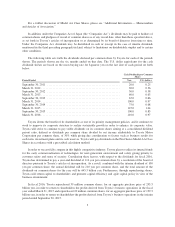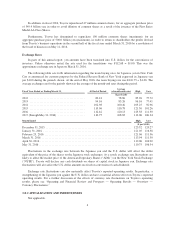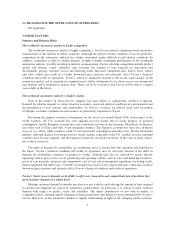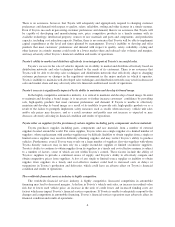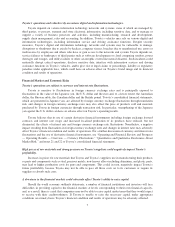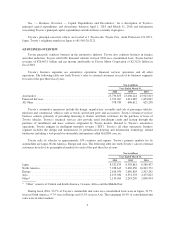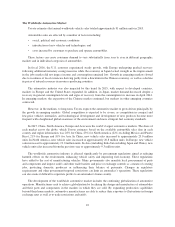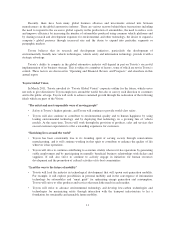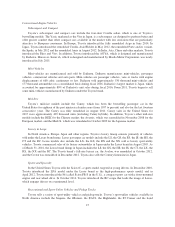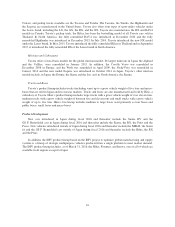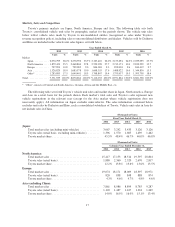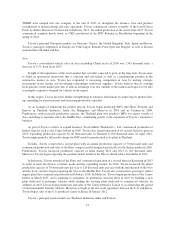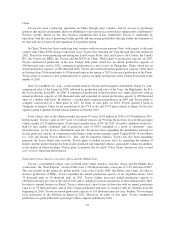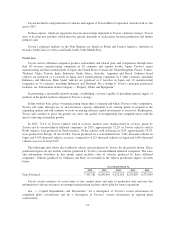Toyota 2015 Annual Report Download - page 18
Download and view the complete annual report
Please find page 18 of the 2015 Toyota annual report below. You can navigate through the pages in the report by either clicking on the pages listed below, or by using the keyword search tool below to find specific information within the annual report.Second, Toyota intends to reinforce true competitiveness in order to grow as steadily as a tree adding annual
growth rings. Toyota will thoroughly improve quality, establish new working methods to sincerely engage with
“customers and cars,” and enhance its crisis management abilities for responding to crises of every type.
In order to realize the above vision, Toyota reorganized its corporate structure in April 2016 to establish a
three-part structure: product-based in-house companies, region-based business units, and the head office. At the
product-based in-house companies, streamlined operation from planning through manufacturing enables quick
and independent decision-making. Within the region-based business units, Toyota aims to build even more
regional operations. The head office will work to formulate a medium- to long-term vision and management
strategy, including an appropriate allocation of resources, with an eye toward the future.
Based on these initiatives, Toyota will contribute to “enriching lives of communities” by providing
“ever-better cars.” This is expected to encourage more customers to purchase Toyota cars and thereby lead to the
establishment of a stable business base. By perpetuating this cycle, Toyota will aim to realize sustainable growth
and enhance corporate value. In addition, through full observance of corporate ethics such as compliance with
applicable laws and regulations, Toyota will fulfill its social responsibilities.
Toyota Environmental Challenge 2050
Positioning responding to environmental issues as one of the most prioritized challenges for management,
Toyota has tackled head-on activities such as the development and promotion of next-generation vehicles
including hybrid vehicles and fuel cell vehicles, efficient production that puts less of a burden on the
environment, the recycling of end-of-life vehicles and hybrid vehicle batteries, planting trees for the coexistence
of humans and nature in harmony, and conservation of ecosystems.
However, in recent years, the seriousness of environmental issues is increasing over a wide area, as
evidenced by global warming, water shortages, resource depletion, and degradation of biodiversity. In response
to the situation, Toyota believes it is necessary to take on new challenges that consider the world 20 or 30 years
in the future, in order to remain closely aligned with the global environment. Accordingly, Toyota announced
Toyota Environmental Challenge 2050 in October 2015.
With the aims of reducing the environmental impact of vehicles as much as possible as well as moving
toward a net positive impact, by 2050 in order to contribute to the realization of a sustainable society, the Toyota
Environmental Challenge 2050 has set forth the following six challenges for Toyota to address.
1. New Vehicles Zero CO2 Emissions Challenge
2. Life Cycle Zero CO2 Emissions Challenge
3. Plant Zero CO2 Emissions Challenge
4. Challenge of Minimizing and Optimizing Water Usage
5. Challenge of Establishing a Recycling-Based Society and Systems
6. Challenge of Establishing a Future Society in Harmony with Nature
Further strengthening collaboration with the Toyota group and all other stakeholders, Toyota will
consolidate new ideas, dynamism and technology to tackle together the realization of a truly sustainable society
from a long-term perspective.
Automotive Operations
Toyota’s revenues from its automotive operations were ¥25,977.4 billion in fiscal 2016, ¥25,062.1 billion in
fiscal 2015 and ¥23,781.4 billion in fiscal 2014.
13


